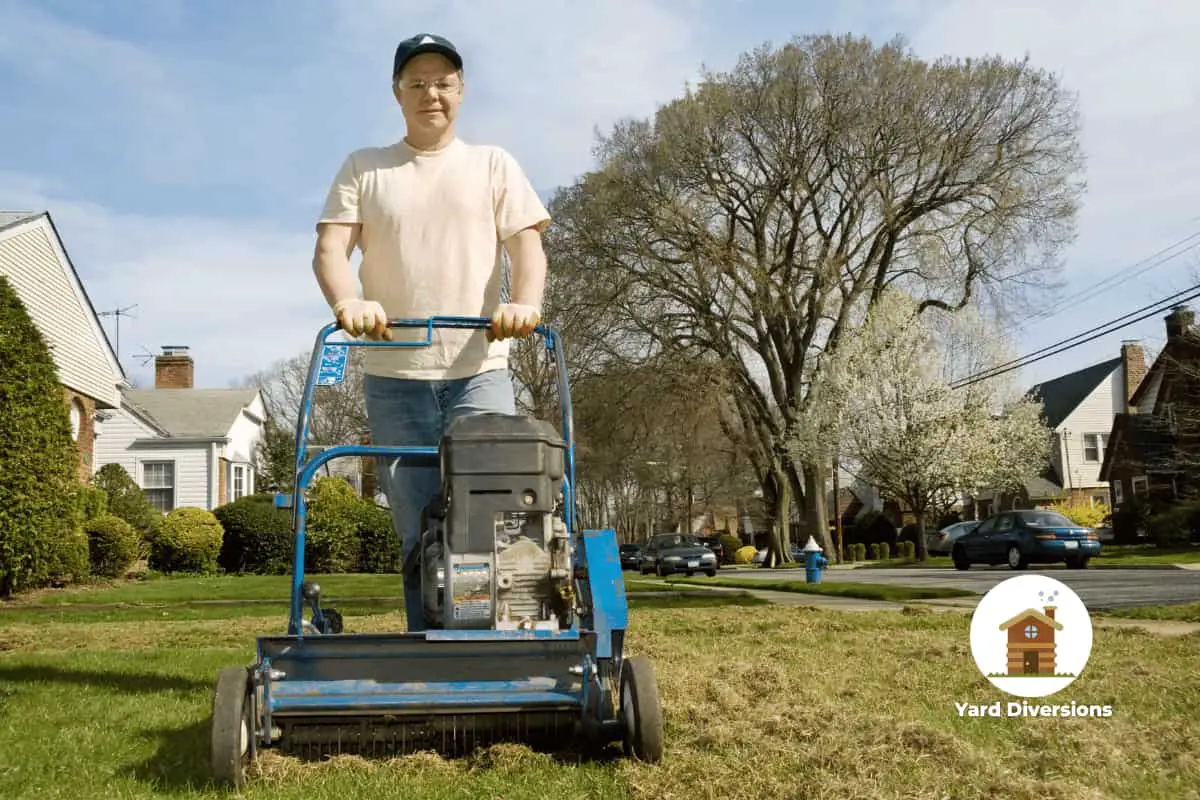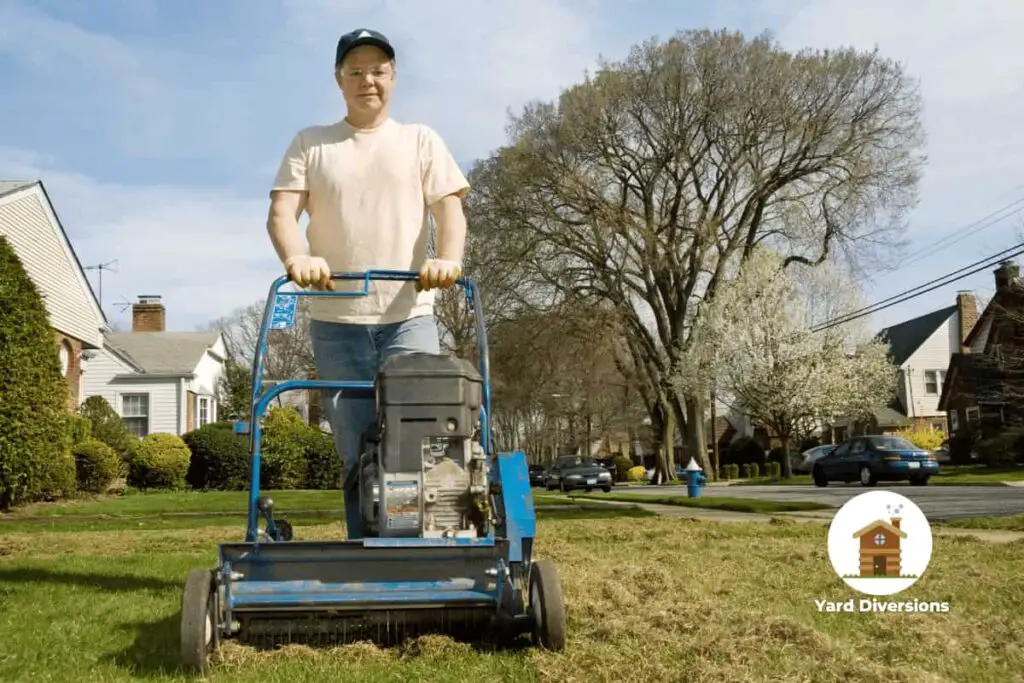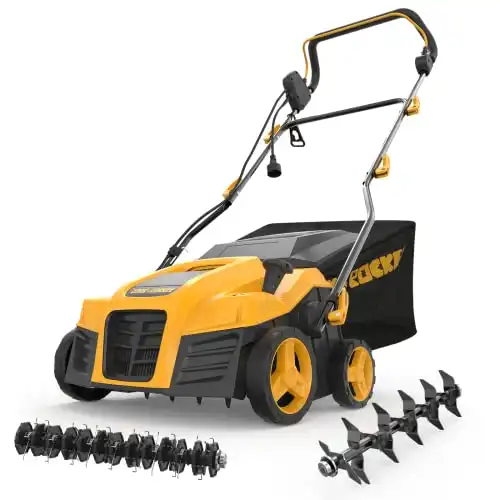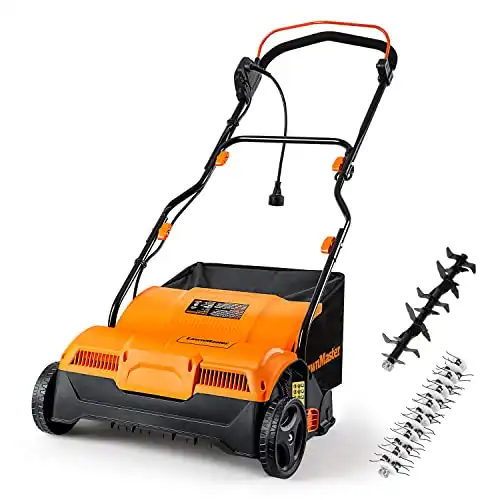Do you have a lush, green lawn? Are you happy with the overall look of your yard? If so, then congratulations!
But if not, it might be time to consider dethatching your lawn. Today we’ll explain what dethatching is and why it can help give you the perfect lawn.

Introduction: What is Dethatching your Lawn?
Dethatching is a lawn care process that involves the mechanical removal of a layer of dead and living organic matter called thatch.
This layer of thatch can prevent air, water, and nutrients from reaching the soil, making it difficult for grass to thrive.
By dethatching your lawn, you can help to ensure that your grass gets the oxygen, water, and nutrients it needs for healthy growth.
In this blog post, we will discuss what dethatching is, why it is beneficial, and how to dethatch your lawn properly.
What is Thatch?
Thatch is a layer of dead and living organic matter that can either accumulate between grass blades and the soil or build up on top of the soil surface.
It usually consists of grass clippings, dead leaves, roots, and other decaying organic matter.
Thatch can prevent air, water, and essential nutrients from reaching your soil, and can cause your lawn to become unhealthy.
Dethatching is a robust, deep-rooted process that removes this excess thatch layer, allowing air and nutrients to reach your soil and fertilize your lawn.
What are the Benefits of Dethatching?
Dethatching your lawn can provide several benefits, including better air circulation and water absorption.
By removing the thatch layer, air and water can more easily reach your plants’ soil and roots.
This helps promote a healthy and lush lawn while ensuring that any fertilizer applied to your lawn is more easily absorbed.
Additionally, dethatching can help to reduce the number of weeds in your lawn by preventing weed seeds from germinating in the thatch layer.
What are the Different Types of Dethatching?
Dethatching can be done through various methods, each with its own advantages and disadvantages.
The power rake, like the Rock&Rocker below, is the most popular type of dethatching, which uses rotating blades to cut through the thatch layer and remove it.
Hand-held dethatchers are also available for smaller areas and are often used for spot treatments.
For larger areas, a tow-behind dethatcher, like this Brinly, is an effective option that covers more ground in less time.
Some people even choose to use a string trimmer or other mechanical device to dethatch their lawns.
Whichever method you choose, it’s essential to be careful not to damage your grass while dethatching.
How do You Know if Your Lawn Needs to be Dethatched?
Knowing when your lawn needs to be dethatched is vital for maintaining a healthy lawn.
Generally, the rule of thumb is that if there is a layer of thatch that is more than half an inch thick, you should dethatch your lawn.
You can check for thatch by simply running your hands through the grass and feeling for a spongy layer.
If you can quickly pull up dead grass and other organic material from the surface, then your lawn needs to be dethatched.
If you notice that your lawn is particularly dry or that water is not draining correctly, then dethatching likely needs to be done.
Tools and Equipment Needed for Dethatching
When dethatching a lawn, the right tools and equipment are essential for getting the job done safely and effectively.
Depending on the size and type of your lawn, you may need a dethatching rake or a power rake.
For smaller lawns, a dethatching rake is the most suitable option as it is lightweight and easy to handle.
A power rake is a more powerful and heavy-duty tool designed for larger lawns and more stubborn thatch.
Both types of rakes provide excellent results when used correctly.
It’s also important to use protective gear such as safety glasses, gloves, and sturdy shoes to keep yourself safe during the dethatching process.
Also, ensure you have plenty of bags or other containers to collect the thatch when you’re done.
The Best Time to Dethatch Your Lawn
When it comes to dethatching your lawn, timing is everything. The best time to dethatch your lawn depends on the type of grass you have.
- Cool-season grasses like bluegrass, ryegrass, and fescue should be dethatched in the spring when the soil is around 50°F, and the grass is actively growing.
- Warm-season grasses like zoysia, bermudagrass, and St. Augustine should be dethatched during the summer when the soil is warm and dry.
It would be best if you avoided dethatching when the ground is wet or frozen, as this can cause damage to the lawn.
The Steps to Take When Dethatching
There are a few simple steps to follow when it comes to dethatching your lawn.
First, it’s important to understand what type of dethatching tools and equipment you’ll need. These include a power rake, a leaf rake, and a dethatcher.
Next, it’s important to prepare your lawn for dethatching by clearing away any debris that may be in the way. This can be done using a leaf rake or a mower set to a low height.
Once your lawn is prepped, you can begin the dethatching process by running the power rake across your lawn in overlapping lines.
This will help to remove the thatch layer and allow air, water, and nutrients to reach your soil.
After the dethatching is complete, be sure to fertilize your lawn and reseed any areas where grass has been removed.
These simple steps will help ensure an effective dethatching process and proper lawn maintenance.
How to Prepare for Dethatching
When preparing for dethatching, it is important to check the soil moisture level of your lawn. The dethatching process may damage or kill your grass if the ground is too dry.
Additionally, fertilizing your lawn before dethatching can help to strengthen and thicken it. To do this, use a slow-release fertilizer.
Once the soil is moist, it is time to begin dethatching. Depending on the lawn size, you may need additional help in the form of a dethatching machine as shown below or a team of people to rake the lawn manually.
Additionally, wearing protective clothing such as gloves and long pants is wise to avoid any potential cuts or scrapes while handling the equipment.
Lastly, make sure that you have all of the necessary tools and supplies before starting the dethatching process so that you can save time and energy.
Common Mistakes to Avoid When Dethatching
When it comes to dethatching your lawn, there are some common mistakes that you should be aware of.
For example, it’s crucial to ensure you don’t dethatch too deeply, as if you do, you risk damaging the soil structure, which can decrease water and nutrient absorption.
Additionally, if you dethatch too frequently, you can damage the grass and increase its disease susceptibility.
It’s also important to be aware of the type of machine that you are using. Different types of machines require different settings, so make sure that you research and read the instructions before getting started.
Finally, ensure you wear protective clothing and safety gear when dethatching to avoid any potential injuries.
Will Dethatching Improve Lawn Health and Fertilizer Absorption?
Dethatching your lawn can significantly improve its health by removing thatch buildup, allowing for better water, air, and nutrient absorption. Fertilizing after lawn dethatching can further enhance this process, ensuring that the nutrients in the fertilizer can penetrate the soil and benefit the grass roots effectively.
Conclusion: The Benefits of Properly Maintaining Your Lawn Through Dethatching
By dethatching your lawn, you can ensure that your yard is healthy and vibrant.
Dethatching your lawn can help reduce the amount of thatch on your lawn, improve air and water circulation, and promote better soil health.
With the right tools and techniques, you can efficiently and effectively dethatch your lawn and enjoy a green, lush lawn all year round!




